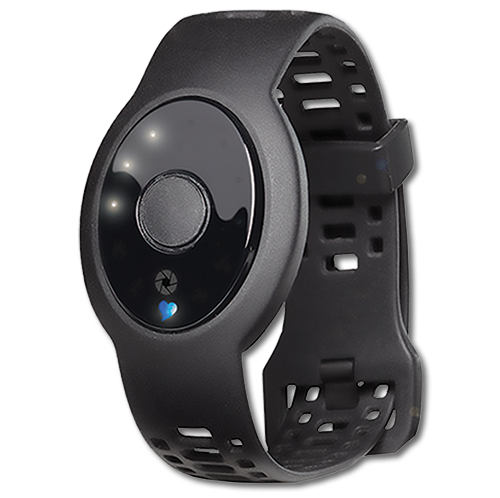Biometric Sensor Tracks Vital Signs for Health
NASA Technology
NASA monitors its astronauts in orbit 24/7, aiming both to learn new information about how human bodies adapt to microgravity as well as to keep track of their health day-to-day. Technology developed to aid in that monitoring has pushed forward wearable technology here on Earth too, helping create devices that could provide clues to heart disease and more.
Many people already keep track of heart rate, whether with a smart watch or an exercise monitor. But for a 2012-2014 project funded by NASA, researcher Lino Velo was interested in going deeper. “The purpose of the program was to be able to detect whether a subject, in this case an astronaut, is under stress,” he explains, and the goal was to create a wearable device that detected this stress in real time, something that will be especially important for deep space missions.
Heart rate is one indicator of stress, he notes. “When you get scared, heart rate goes up.” But there are other kinds of stress, and in this experiment, Velo was looking at cognitive load: “if you have to think fast and reason and be very alert, that kind of stress is what we focused on,” he explains.
Velo and his team were interested in two possible ways to measure stress, one measuring brain activity with EEG (electroencephalography) and functional near-infrared spectroscopy, or FNIRS, and the other measuring heart rate variability using a miniaturized, wearable PPG (photoplethysmography) sensor, which measures light absorption through the skin to calculate blood flow.
Heart rate variability is a measure of how regular one’s heartbeat is. Perhaps counterintuitively, the more irregular the rhythm, the less stressed the person is. That’s because heart rate variability is a “measurement of the equilibrium of the body—whether it can rest and relax or whether it needs to be ready to run away or fight,” says Velo.
Measuring heart rate variability is more difficult than simply counting beats per minute. Velo’s goal was to test whether his mini PPG sensor could measure cognitive stress as accurately as EEG.
In the experiment, subjects completed difficult memory tasks under time pressure. By measuring the EEG waves as well as the PPG results, Velo says, researchers were able to see biological markers of stress and calm—and, importantly, the results from the two methods matched.
Technology Transfer
Velo’s research was funded with Small Business Innovation Research (SBIR) contracts to his company at the time, Linea, through the Human Factors and Behavioral Performance Element of the NASA Human Research Program at Johnson Space Center, explains NASA’s Kristine Kennedy Ohnesorge, who helped oversee the project.
However, when it came time to move on to the next step, NASA decided not to continue funding the work. Linea “obviously has a lot of technical experience and expertise when it comes to developing these types of wearable, sensor-based devices,” Ohnesorge emphasizes, but “research budgets are smaller than they used to be.”
Given the fast-moving market of commercial wearable sensors, she says, NASA has decided to focus on finding “off-the-shelf” technology to test in space. Meanwhile, Velo has taken results from the NASA work to develop internally at Newark, California-based Salutron, which acquired Linea.
Benefits
Today Salutron sells a number of different models of wearable health monitors directly to consumers, as well as individual sensors to companies for them to integrate into their own devices.
One model, available from Salutron’s website, is the Zoom HRV, which measures heart rate variability using the PPG sensor developed during the NASA work. It also incorporates actigraphy—monitoring rest-activity cycles—and sleep sensors (the latter were developed under separate SBIR contracts with NASA). The company has also developed an app that presents the results in a user-friendly format.
For now, Velo says, the core audience appears to be people interested in tracking fitness—and the heart rate variability data is helpful for monitoring how well the body is recovering during rest periods.
But he sees potential for these devices to help monitor health more broadly. By monitoring heart rate variability over weeks and months, for example, users can immediately be alerted to a change from the baseline, which suggests the body is becoming stressed.
“We’re trying to address the state of an individual before he or she gets into any kind of ailment—trying to be ahead of the curve to help people,” he says.

Salutron sells a smart watch, the Zoom HRV, that measures heart rate variability using a blood flow sensor developed with funding from SBIR contracts from Johnson Space Center. The watch also monitors sleep, using additional sensors developed under separate SBIR contracts.













